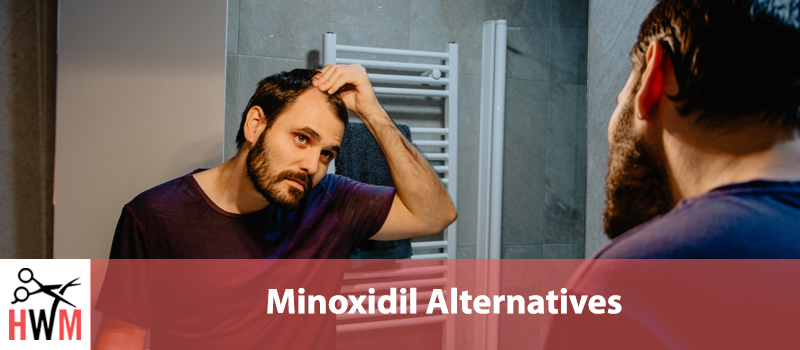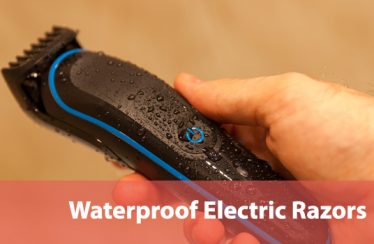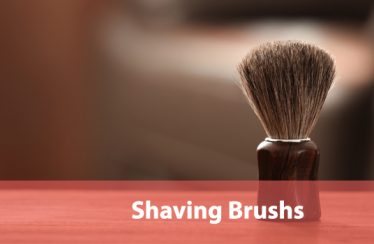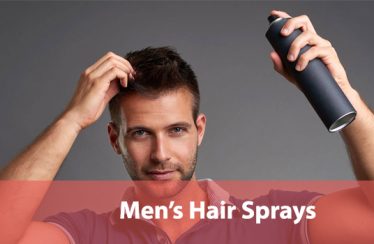You’ve probably heard of Minoxidil or Rogaine if you have any form of hair loss. It’s usually one of the first suggestions from friends, doctors, and even coworkers when you first start experiencing thinning hair.
But, despite being the only FDA approved topical treatment for hair loss, Rogaine isn’t for everyone. It’s only effective for about 60-80% of users and can have negative side effects for some users.
Or, you may just not want to use Rogaine until you’ve explored some other options. After all, once you start using Rogaine you need to continue for however long you want to keep your hair.
There are some alternatives you can try. If Rogaine isn’t for you, this article is.
Finasteride
Of course, the main alternative for Rogaine is another FDA approved hair loss treatment. Finasteride often sold under the brand name Propecia, is one of Rogaine’s main competitors.
Finasteride is only approved for use by men.
The medication comes in pill form. We also recommend that women and children not touch or interact with Finasteride pills if they are broken or otherwise damaged.
Finasteride is also commonly prescribed to work in conjunction with Rogaine, but you don’t need to use both to see positive effects.
Like Rogaine, Finasteride was manufactured for a different medical purpose. It’s still used as a treatment for prostate issues, and you should make sure your doctor knows that you take finasteride any time you get testing done.
You do need a prescription to take finasteride, and unfortunately, your insurance may not cover it since the dosage is noticeably different for treating hair loss and for treating prostate issues.
Finasteride, like minoxidil, increases the size of your hair follicles, improving hair health and thickness. However, it takes at least 3-4 months to start showing results. You should keep taking Finasteride for at least 6 months to fully evaluate your hair growth.
It’s also easier to use. Simply make taking the pill part of your daily routine. You don’t need to worry about a topical solution running down your scalp, drying, or having to apply the solution more than once a day.
It’s also safe for cat owners, unlike certain minoxidil preparations.
But, like minoxidil, the results you get from Finasteride will fade within 12 months if you stop taking the drug, and you need to be consistent about taking it to get the best results.
You should also know that your testosterone levels may increase slightly while taking Finasteride. One of the primary actions of Finasteride is to prevent your testosterone from converting into DHT, one of the most active androgens when it comes to hair loss.
Hair Loss Shampoo
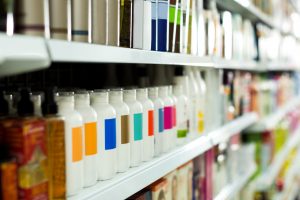
Another option, although no an FDA approved one, would be to switch to a hair loss specialty shampoo. You can buy a drugstore version, although most users see better results from higher-end shampoos.
If you’re interested in exploring a hair loss shampoo, a good first step would be with your hairdresser or stylist. They’ll likely have a recommendation for a good shampoo to help stop and reverse hair thinning.
You can also look into well-known specialty brands like Nioxin, Kerastase, Aveda, or Andalou Naturals.
Every shampoo formula is a little different, and there is such a wide variety of hair-boosting ingredients that it would be impossible to list them all here, but there are some general rules you can follow to make sure you’re getting a high-quality shampoo.
Avoid Sulfates and Parabens
Sulfates and parabens can both be irritating and drying. They can cause inflammation, which damages your hair follicles and reduces the thickness and health of your hair over time.
Sulfates and parabens can also contribute to hair drying and damage, including split ends.
Include Natural Oils
Your hair and scalp will respond well to oils that are similar to the natural oil of your skin. Jojoba oil is a great choice for overall skincare, although some people have better results with argan oil for hair loss. Shea butter, olive oil, coconut oil, and other natural moisturizers are also good options.
Having a little oil in your shampoo and conditioner can help fight dryness and irritants from your shampoo.
Advertises Fighting DHT, Reducing Inflammation, Or Stimulating Your Scalp
All three of those descriptions, fighting DHT, reducing inflammation, and stimulating your scalp, refer to specific hair loss-fighting actions that can boost the health of your scalp and hair follicles.
While an advertisement or claim on a bottle of shampoo isn’t a guarantee that it will do what it says it does, it’s a good start.
Combine those advertisements with a sulfate- and paraben-free and you’re off to a good start even if you can get a stylist or dermatologist recommendation.
At-Home Alternatives
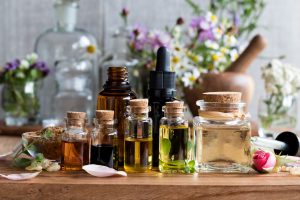
Shampoos and finasteride aren’t the only minoxidil alternatives you can try. There are lots of hair care remedies you can use at home that help to heal your scalp and grow hair.
None of these remedies are FDA approved, and you may want to experiment with different options until you find a mix that seems to work for you. We’ll talk about how each works, and how you should use them for the best results.
Of course, if you develop a rash, aren’t seeing results, or are concerned about side effects from any of the options we have listed, you can consult with a doctor or dermatologist to learn more.
You should plan on trying any of these methods for at least 3-4 months before evaluating your results. It’s a good idea to take a before photo, as well as occasional progress photos to make it easier to compare and see your results.
Red Light Therapy
Red light therapy is a fairly new and experimental treatment for several different conditions, including joint pain, aging skin, and hair loss.
Red light therapy isn’t like laser therapy. Several in-home devices have been FDA approved for skincare or joint pain, though hair loss isn’t on the FDA approved use yet.
That said, any treatment that can improve the health of your scalp will also improve the health of your hair follicles.
Red light therapy works by stimulating your mitochondria to produce additional ATP. ATP is the basic fuel all of your cells need to function. It’s produced by the mitochondria, an organelle in your cells that converts nutrients and energy from the digested basics into a usable form.
In your skin that extra ATP allows your cells to produce additional collagen and other critical proteins.
For your hair follicles to grow and stay active they require a lot of energy. Your hair is made from rapidly-dividing cells that go through a lot of nutrients and energy to grow and divide properly. Without that energy, your hair follicles can shrink, and the hair strand itself can be damaged and brittle as it grows out.
Red light therapy tends to be easy to do at home and requires only a short treatment time. You can also need if any local gyms or dermatologists have a red light therapy treatment available if you want to try it before getting an FDA red light therapy device of your own.
Essential Oils
Another common treatment for hair loss, stimulating your scalp and increasing circulation, are essential oils.
All essential oils should be diluted into a carrier oil before you put them on your skin, they can be too intense and irritating if they aren’t diluted.
Essential oil treatments should be pleasant, don’t use any essential oil that is uncomfortable, causes a rash or redness, or seems to have a negative effect on your skin.
It’s a good idea to do a small skin test with the diluted oil on your arm. Spread the oil over a quarter-sized patch of skin and watch for a reaction. You should leave the oil on at least five minutes before washing it off.
When you apply an oil to your scalp you should also plan to wash it out 10 minutes to an hour later, since the oil will likely make your hair look greasy.
Tea Tree Oil
Tea tree oil is a common essential oil for both hair and skin treatments. It’s a great cleanser and anti-microbial.
Your scalp naturally has a population of bacteria and yeast that grows, usually without causing any problems. But if the bacteria or yeast gets out of balance, they can cause irritation and inflammation, making your scalp itchy, flaky, or causing a minor rash.
Tea tree oil can also be irritating if you have sensitive skin. It’s a good idea to start with a lower concentration in your carrier oil, and then add a little more at a time if you don’t think you’re getting good results.
Tea tree oil also helps increase circulation in an area and can help reduce inflammation. Increasing circulation is critical for hair growth and restoring the health to your hair follicles.
Rosemary Oil
Rosemary is another essential oil that works to increase circulation. It can also help reduce dandruff and flakiness.
Rosemary is a little gentler than tea tree oil. They’re also commonly used together in hair boosting oil blends.
If one of your hair concerns is premature graying, rosemary oil can also help preserve vibrant, colorful, hair. Like tea tree oil, you should dilute rosemary oil in a carrier oil before applying it to your scalp.
Lavender Oil
Lavender is the gentlest essential oil that can help with hair loss and other scalp conditions. It’s also mildly anti-microbial and anti-bacterial. It can also contribute nutrients to your skin and hair follicles, helping the hair follicles grow and continue producing healthy hair.
Lavender can also help reduce stress and anxiety, which both contribute to hair loss. Cortisol and other stress hormones can damage many different types of cells within the body, in addition to causing inflammation. Reducing the concentrations of those stress hormones helps improve your overall health and will improve the appearance of your hair.
Mint Essential Oils
There are many different types of mint. You can experiment with different types of mint essential oils since they have differing levels of menthol, as well as other compounds that can make a difference in your skin and hair’s response to the oil.
Menthol attracts circulation to an area, reducing inflammation. Mint oils can also help to treat irritated or itchy skin, both by soothing the cause of the irritation and by preventing the sensation.
Peppermint oil has the highest concentration of menthol and feels fresh and light for most people. It can be too intense for some, especially if you have sensitive skin or are sensitive to menthol.
Spearmint, on the other hand, has a lower concentration of menthol but has been shown in several studies to help regulate stress and androgen levels, keeping your hormones in balance. Since high androgen levels, particularly dihydrotestosterone, or DHT, can cause and contribute to hair loss.
Other types of mint, including wild mint, include different levels of the active chemicals, so even if peppermint and spearmint aren’t for you, one of the other mint essential oils may be effective.
Supplements
Supplements are another great option. A good supplement can help improve your health from the inside out. Your hair follicles are dependent on a steady supply of nutrients, oxygen, and good hormone balance.
While supplements aren’t FDA regulated, high-quality supplements do exist.
If you don’t already know of a supplement brand that you trust you can ask your primary care physician to recommend one. Not all doctors will make a brand recommendation, but many have seen success from a specific brand, or use one themselves that they use and trust.
Hair Skin and Nails
Hair skin and nails supplements specifically target the nutrients you need for collagen production, one of the key proteins needed for healthy hair and skin.
Most hair skin and nails supplements combine a high dose of Biotin with vitamin C, and some will also include zinc, iron, or other vitamins, minerals, and botanical ingredients meant to increase the bio-availability of the main active ingredients.
Since you need to have a combination of vitamins and minerals to properly absorb any vitamin, a complex like this may be more effective than taking individual vitamins on their own.
Hair skin and nails supplements will affect more than just your hair, you’ll likely see changes to your fingernails, body hair, skin, and may even see a change in how your joints feel.
Biotin
Biotin is one of the more important vitamins for hair health. Taking a biotin supplement is one of the most common ways to boost your hair health and thickness.
You should know that biotin will increase your hair growth everywhere, not just on your scalp. If it’s working, you’re likely to notice increased body hair as well as improved skin.
Multivitamins
A multivitamin is probably your best choice if you’re looking to address your overall health. Most multivitamins are designed to meet the minimum nutrition requirements for all the essential vitamins.
A vitamin is considered essential when your body doesn’t produce any of that vitamin on its own, which means you need to get all of your requirements from your diet.
Since your hair follicles are fairly delicate, they are easy to damage if you have a deficiency of any essential nutrients.
Multivitamins can also help your energy levels as well as reducing stress.
Zinc & Iron
Zinc and iron are both important vitamins for taking care of your hair. Iron, in particular, can help your circulation and increasing the amount of oxygen that makes it to your hair follicles.
Zinc can also boost healing, especially around your hair follicles. It can also work to keep your sebaceous glands working properly. Too much and too little sebum (the oil your skin produces) both cause problems on your scalp.
Keeping your sebaceous glands working properly prevents a wide range of problems that can damage your hair or cause hair fall.
Adaptogens
Adaptogens work to make it easier to handle stressors in your situation or environment. They can help you deal with high-stress situations, increase your energy levels, and can help you feel healthier and happier in general.
Common adaptogens include ginseng, Siberian eleuthero, ginger, and others.
You can take them as supplements or in tea. Spicy food can also increase your endorphins, improve circulation, and act as a general adaptogen.
Exercise
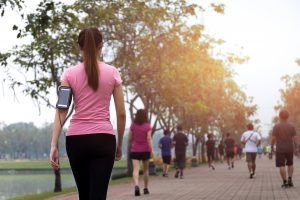
Adding to your workout routine, particularly adding cardio, can also help your hair follicles and improve your hair growth and thickness.
Exercise works by improving your cardiovascular health, improving the circulation in your scalp and letting more oxygen and nutrients get to your hair follicles.
While exercise isn’t a replacement for minoxidil, and it likely won’t restore your hair vibrancy or thickness on its own, it is an important part of helping your hair grow. While not a direct treatment, you shouldn’t neglect exercise as part of your treatment plan.
Caffeine
Caffeine can also help your scalp and hair follicles. It helps be encouraging healthy cell division, and, depending on the source of the caffeine it can also provide a lot of necessary nutrients.
Caffeine does help internally, so your morning cup of joe does help your hair. Unfortunately, too much internal caffeine also hurts your hair, so drinking too much coffee won’t help. You can apply caffeine topically through and get a lot of the benefits directly on your scalp.
Coffee scrubs, shampoos, and other hair products are increasingly popular, and caffeine’s beneficial effects are explored.
Green and black tea can also be used, in a hair spray or other treatment for your hair.
Caffeine also increased the amount of circulation in your scalp applied topically.
It can cause a tingly feeling when you use caffeine on your skin, so don’t be concerned if you notice a slight tingle from caffeine hair and skin products.
Hair Masks
Hair masks are another minoxidil alternative. You can buy a hair mask at the store or make your own at home.
A hair mask can be as simple as just some olive oil or another natural oil combed through your hair and massaged into your scalp.
You can also use coffee, tea, or other sources of caffeine mixed with oil or other moisturizing ingredients to make a mask.
Store-bought masks often include salicylic acid, which both cleanses your hair, breaks up dry skin and helps it wash away, washes away excess oil, and can help your scalp absorb other beneficial ingredients and nutrients.
Avocado is another great choice for a hair mask.
Any hair mask should be applied for at least 10 minutes, all over your hair and scalp. You shouldn’t leave them in for more than an hour before you wash them out.
Wash and condition as normal, even if your hair mask of choice was cleansing or served the same role as the shampoo or conditioner.
Your hair will likely be poofy after you use a hair mask. Ideally, you should avoid heavy styling or product use after a hair mask since they can be irritating or cause problems of their own, so don’t use a mask the day before a big event.
Conclusion
Minoxidil is the only FDA approved topical treatment for hair loss. But there are other treatments available, both FDA approved and not.
Hair is a reflection of your total health, so tending to your total health is an important part of your hair treatment routine.
Nothing is going to truly replace minoxidil, it’s more effective and then most other treatment options. However, you can use a combination of lifestyle changes and other over the counter and at-home treatments that will boost your hair and your hair growth.
You don’t need to depend on Rogaine, or it’s generics, to have great, full, thick hair. There are prescription alternatives, beauty product alternatives, and natural at-home options that will also give you amazing hair.
Feel free to experiment with different treatments and different treatment combinations. It’s important to give each treatment a few months to work, but if it doesn’t seem like a particular combination is working for you feel free to try something different.
